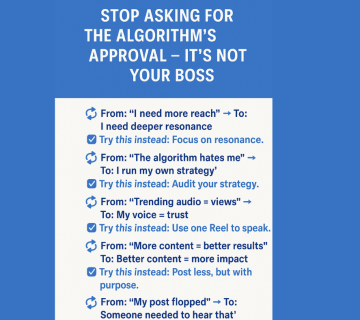Business Planning Success
You Have To Know Where You’re At Right Now To Measure Growth & Figure Out What You Should Be Working On
 Are you ready to take your online business to the next level and watch some explosive growth unfold over the coming months? Great. Before you start to plot and plan what you want to do to make that happen, it’s important to stop and look at where you’re at right now.
Are you ready to take your online business to the next level and watch some explosive growth unfold over the coming months? Great. Before you start to plot and plan what you want to do to make that happen, it’s important to stop and look at where you’re at right now.
Business planning for future success is all about data. You can work most efficiently and spend your time and money most effectively if you know exactly where you are starting from. By recording data, you can start to see what’s working, what isn’t, and what trends are starting to play out. And it all starts with recording where you’re at right now.
Let’s take a look at some of the things you want to record. First though, you should decide how you want to record this information. You can write it down by hand in a notebook, open up a word document to do it digitally, or use a spreadsheet. I prefer a spreadsheet because I have the option to have it calculate fun additional information like weekly and monthly averages and even map it all out in graphics to help me get a clearer picture.
Traffic – To grow you need to expand your reach. That means getting more traffic, but also engaging the people that come to your site by encouraging them to click around and read more. Good things to keep track of are total visitors, unique visitors, bounce rate, and of course where the traffic is coming from.
List / Subscribers – Your next goal is always to get these people on your list. Here you want to track total number of subscribers, conversion rates for each of your opt-in forms and pages, open rates for your emails, and also unsubscribes. As you start to collect and review this data regularly, you’ll get a much better picture of your subscribers.
Customers – Subscribers are great, customers are better. Start by keeping track of how many total customers you have and how many purchases per day, week, and month. Other good numbers to look at are total lifetime value of your average customer, repeat purchases, and refund rates.
Income & Expenses – Last but not least, look at your bottom line. This is your typical accounting data. You want to keep track of your income as well as your expenses. With those two sets of numbers, you can easily calculate your overall profit. I find it helpful to look at profit for the month, but track income on a daily basis.
Yes, you can look at most of this data in various different places like Google Analytics, your shopping cart, and your autoresponder service for example, but it’s important to have it all in one place. This makes it much easier to connect the dots and see the relationships between the different sets of numbers.
Now that you have your initial data collection set up, make it a habit to update the numbers regularly so you can see what’s working, what isn’t, and how much you’re growing as you move through the coming months and years.
Action Steps
- Set up a spread sheet to track traffic to website: total visitors, unique visitors, bounce rate, and traffic sources percentages
- If you are not using a CRM, set one up. Look into Keap or Systeme.io.
- Use a reliable online bookkeeping tool or hire a bookkeeper so you keep records of monthly profit/loss.

Join our Simply Smart Marketing Facebook Group and share your thoughts with other small business owners.




